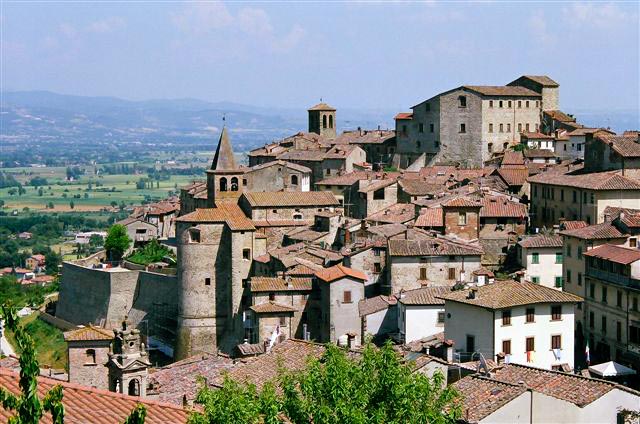
The Comune of Montecarlo whose territory gathers around the ancient castle that dominate, with the red of the walls and towers all the countryside around, characterised by vineyards – here , in fact, is the production centre of Montecarlo DOC wine – and rustic farm houses. Montecarlo was fonded in 1333, in the vicinity of ancient fortress of Cerruglio, by the inhabitants of two neighbouring towns – tuscany – that were destroyed during the wars of 1314 and 1331, in hounor of Karl of Bohemia who had aided the Lucchesi against the Florentines.
In the complex of the fortress of Montecarlo are prominent the suggestive Rocca (castle) with its ancient keep of Cerruglio, the central part being the work of Bohemian architects, and the 16th-c part, the two doors that are still intact, and the high walls. To be noted is the elliptically-shaped keep, an architectural typology that was quite common in France but rare in Italy.
Also worthy of note are the Palazzo dei Vicari, decorated with coats of arms, and the restored 18th-c Teatrino dei Rassicurati.
Instead little remains of ancient 14th-c. curch of Montecarlo, after the transformations at the end of the 18th-c.
The fresco of Madonna del Soccorso, the work of a late 14th-c. artist, perhaps a pupiln of Angelo Puccinelli or of Francesco dell’Anguillara ( who were artistically active in Lucca from 1380 to 1390) has remarne unchanged.




